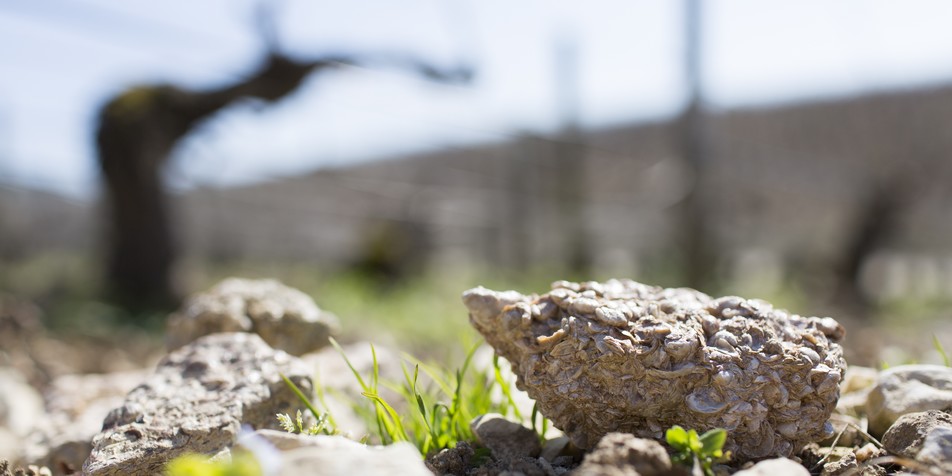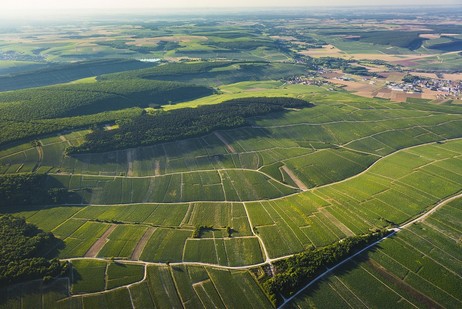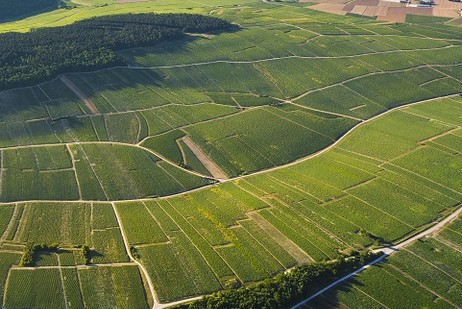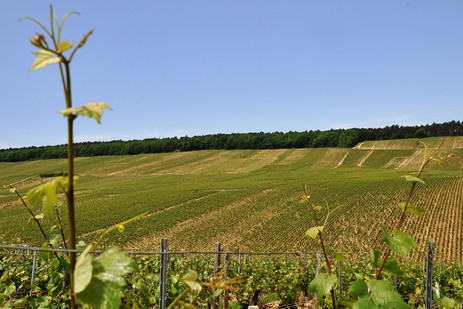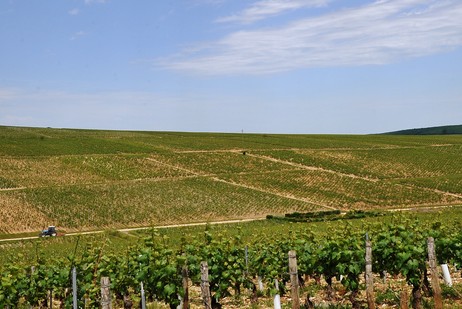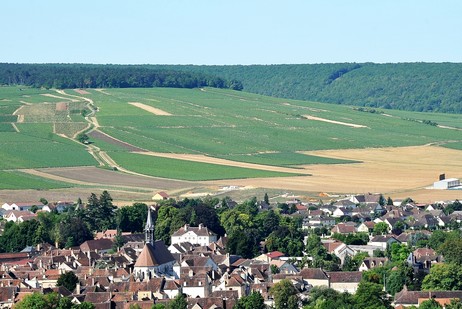Vaillons, Chatains, Beugnons, Mélinots, Roncières,Sécher, Les Epinottes, Les Lys
Vaillons, a flag-ship Climat
CHARACTER, STORIES AND LEGENDS
- Located on the left bank, Vaillons is quite the pioneer, since it is one of the first Climats to be classified as a Premier Cru on this side of the Serein. Known to be hard to work — the surface clays are sticky — taming this Climat is crucial to get the best out of it! The result is outstanding beyond a doubt: controlled balance, intense aromas, elegance and mineral tension — all the necessary ingredients to make Vaillons a great Chablis. Already quite expressive after 2 or 3 years, it will gain in complexity with another few years of ageing.
- Latin provides the answer: etymologically, vallis or valles mean "a large space between two areas". Spelled "Valion" in a document dating from 1429, Vaillons ultimately derives its name from this notion of small valley.
Chatains
CHARACTER, STORIES AND LEGENDS
- LThe wines gathered under the flag-bearing Climat Vaillons are emblematic of Chablis’ Premier Cru wines. Like its neighbors, Chatains is perfectly balanced: dense and robust, without being too muscular, nervous without being aggressive, smooth and delicate without ever becoming too buttery.
- Among the fanciful theories conjured up to explain the origin of Chatains, some refer to chestnut trees. No record of any has ever been found in Chablis, as they would not do well in this limestone soil! A reference to chestnut-brown seems more plausible, since Chatains distinguishes itself by a chestnut-brown earth from the erosion of the plateaus. So, the geological theory is likely the one!
Beugnons
CHARACTER, STORIES AND LEGENDS
- A charming, and even sometimes seductive wine, Beugnons has the temperament of a hot terroir. It must be said that it makes a strong case: very supple, with an incredible aromatic strength and a delicate minerality. As the wines from Chablis Premier Cru Beugnons are warm wines, they can be enjoyed young. They reveal, however, other sides of their personality after ageing 5 to 7 years.
- Our ancestors the Gauls might have played a key role in the history of this Climat! At the time, "bugna", "bignon", and "buignon" were all words describing a tree trunk or an uprooted tree stump", so Beugnons may have its origin in the great clearances of the 12th century. Another explanation might be the word "bugnon", the ancient name for a spring. On a map dating from 1705 of the various properties of the Pontigny Abbey, there is a spring flowing there. The Gallic origins of the word "source" are the most likely explanation.
Mélinots
CHARACTER, STORIES AND LEGENDS
- Despite its peripheral position, Mélinots does not go unnoticed: its wines are very expressive, with a beautiful fruity aromatic intensity. Their outstanding mineral tension gives them elegance and delicacy. Be patient: they need 2 or 3 years before revealing their true complexity. Their ageing potential can be as long as 6 to 8 years.
- In the past, the day before the grape harvest, winegrowers used to use little windmills incorporating iron boxes filled with stones that would turn and keep greedy badgers away! Mélinots might come from "moulinot" (little mill). Another possible explanation: from the name of certain families called "Mélin" and "Méline" who grew vines in the Middle Ages. Mélinots could be the nickname given to "Mélin’s children" who owned vineyards there.
Roncières
CHARACTER, STORIES AND LEGENDS
- The Climats under Vaillons all show certain similarities, while also developing their own personalities; a perfect example of the great strength of Chablis – one terroir and one grape variety, but such an array of Climats! Roncières has this delicate and buttery texture, counterbalanced by a controlled liveliness. In their own way, these wines are typical of Vaillons.
- Back in 1429, the word "Roncières" was already spelled as it is now. The origin of this name leaves no room for ambiguity. Brambles are everywhere in this area and have always been part of the landscape. They used to be quite overwhelming and constitute a dense brush! The vineyards planted later on were named after them.
Sécher
CHARACTER, STORIES AND LEGENDS
- The hill of Sécher is known for being difficult: a poor and dry soil combined with a naturally cold setting constrain the grapes to a slow ripening. This gradual maturation is reflected in the wines through their stony minerality, as well as their fruity and floral notes. Its remarkable power and length on the palate give way to its high purity. A nice tension and a natural freshness give Sécher the means of ageing well. Its cellaring potential is close to a decade, if not more.
- Prior to the major clearances of the 12th century, Sécher was probably a wooded hill. As such, its name might refer to secabilis (able to be cut). A parchment of the Chapter of Saint Martin of Tours dated 1267 says "dimidium arpentum vinee in loco dicitur sichi", which means "half arpent of vine in a certain place called "sichi".
Les Epinottes
CHARACTER, STORIES AND LEGENDS
- Les Epinottes is the largest of the 8 Climats under the flag-bearing Climat Vaillons. Brisk without being aggressive, substantial without being too muscular, and smooth without being too creamy, the Chablis Premier Cru wines from this Climat exhibit the distinctive balance of Chablis wines.
- All the legends behind Les Épinottes have one thing in common: they all have something prickly about them! Spelled "l’espinotte" in 1429, coming from the Latin word spina, it changed into "épinette", pointed secateurs used for harvesting. As for the adjective "spinal", it refers to the backbone or the spinal cord. Other words include the Old French word espinar (hedgehog), espinat (thorn bush) or éspinaie (a place covered with thorns). One thing is certain: thorns and brambles inspired people to name this place once they had removed the brush and planted vines.
Les Lys
CHARACTER, STORIES AND LEGENDS
- Because of its unique exposure, Chablis Premier Cru Les Lys has no equivalent. The wines from this crisp and lively Climat have great length on the palate and a moderate minerality. As the vines take their time to mature, the resulting wines are surprisingly rich and qualify as gastronomic wines. They need a few years to fully express themselves; while their minerality is beautifully developed after 2 or 3 years, they can easily age 7 to 10 years, if not more.
- No need to go too far back in time since the name Les Lys was only first mentioned in the 19th century. This might come as a surprise, knowing that vines have been growing here since 1267! Whatever the case may be, this name probably comes from the Latin word licium (edge). The Chemin du Lys, that runs above this Climat, still winds its way to the edge of the woods.
